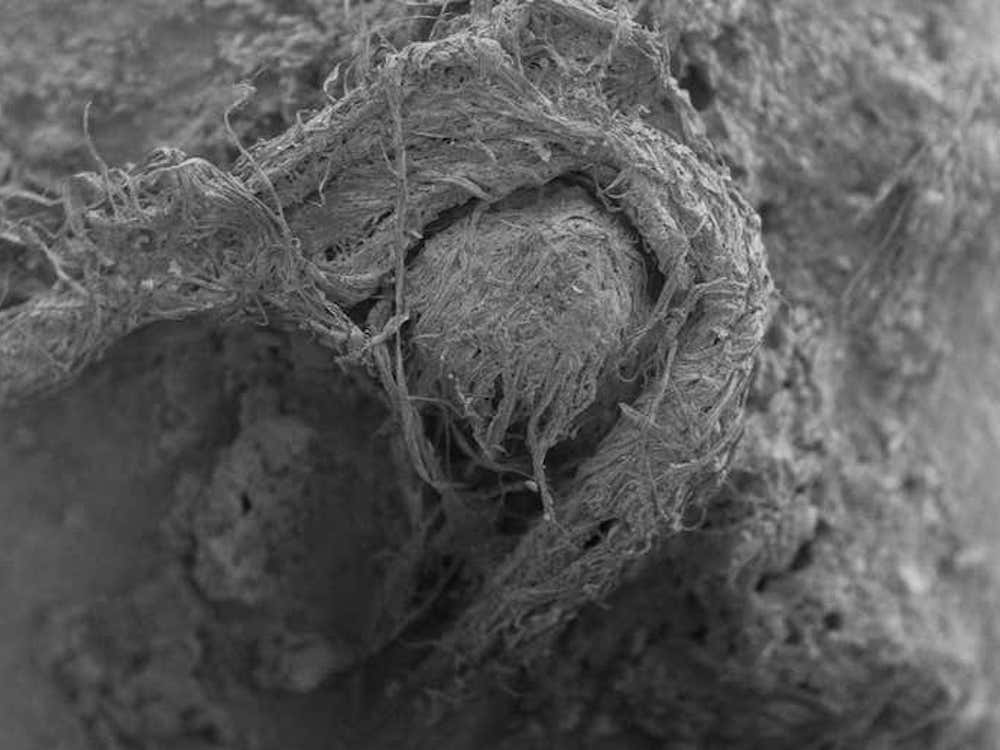[dropcap style=”font-size:100px;color:#992211;”]A[/dropcap] piece of 50,000-year-old string found in a cave in France is the oldest ever discovered. It suggests that Neanderthals knew how to twist fibres together to make cords, and, if so, they might have been able to craft ropes, clothes, bags and nets.
“None can be done without that initial step,” says Bruce Hardy at Kenyon College in Gambier, Ohio. “Twisted fibres are a foundational technology.”
His team has been excavating the Abri du Maras caves in South-East France where Neanderthals lived for long periods. Three metres below today’s surface, in a layer that is between 52,000 and 41,000 years old, they found a stone flake, a sharp piece of rock used as an early stone tool.
Examining the flake under a microscope revealed that a tiny piece of string, just six millimetres long and 0.5 millimetres wide, was stuck to its underside. It was made by twisting a bundle of fibres in an anticlockwise direction, known as an S-twist. Three bundles were twisted together in a clockwise direction — a Z-twist — to make a three-ply cord. “It is exactly what you would see if you picked up a piece of string today,” says Hardy.
The string appears to be made of bast fibres from the bark of conifer trees, which helps establish that it isn’t a stray bit of modern string, because “nobody at the site was wearing their conifer pants at the time”, says Hardy.
“It’s so fine. That’s really surprising,” says Rebecca Wragg Sykes at the University of Bordeaux in France. This suggests the string wasn’t used for heavy-duty tasks, but instead as some kind of thread, she says.
Before this find, the oldest known string came from 19,000 years ago. This was discovered in the Ohalo II site near the Sea of Galilee, Israel, and is associated with modern humans. But Hardy says the newly found string was made by Neanderthals, as there were no modern humans in this part of Europe at this time.
This raises the question of whether modern humans learned some of their skills from Neanderthals, says Wragg Sykes.
Hardy thinks the string shows that Neanderthals were as smart as us. They were very similar to us, according to Emma Pomeroy at the University of Cambridge, whose team has found evidence that Neanderthals buried their dead. “Neanderthals engaged in complex behaviours that we thought they weren’t capable of ,” she says.
Source: New Scientist

Naila Scargill is the publisher and editor of horror journal Exquisite Terror. Holding a broad editorial background, she has worked with an eclectic variety of content, ranging from film and the counterculture, to political news and finance.
















